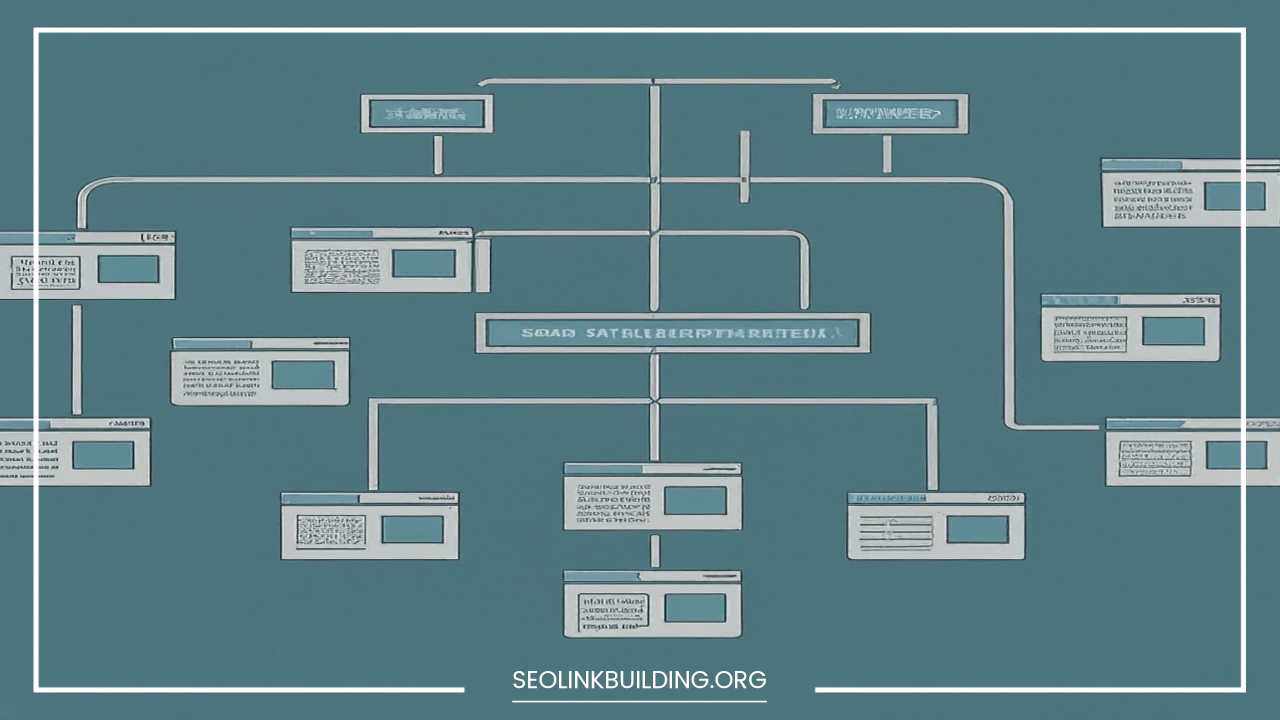How to Create an XML Sitemap (and Submit It to Google)

How to Create an XML Sitemap
How to Create an XML Sitemap (and Submit It to Google)
Understanding XML Sitemaps
An XML Sitemap is a critical component for any website aiming to improve its search engine visibility and efficiency. Essentially, it is a file that outlines the URLs of a website, and it often includes additional metadata about each URL.
This metadata typically includes the last modification date, the frequency of updates, and the priority of the pages relative to each other.
This information helps search engines like Google understand the structure of your site and index its content more efficiently.
What is an XML Sitemap?
An XML Sitemap is a structured list of URLs on your website designed to help search engines crawl and index your site.
Unlike a regular HTML sitemap, which is intended for human visitors, an XML Sitemap is specifically created for search engines.
It helps search engines discover pages on your website that might not be easily accessible through normal site navigation.
Why XML Sitemaps Matter
The presence of an XML Sitemap can significantly impact how search engines interact with your website. Without a sitemap, search engines might miss some of your content, especially if it’s buried deep within your site or not linked effectively.
An XML Sitemap addresses this issue by ensuring that all your important content is known to search engines.
Benefits of Using an XML Sitemap
Improved Search Engine Visibility
One of the primary benefits of using an XML Sitemap is enhanced visibility in search engine results. By providing a detailed list of URLs and their associated metadata, you help search engines understand the structure of your site.
This improves the likelihood that all of your content will be indexed and included in search results. For large sites or those with complex structures, this can be especially beneficial.
Faster Indexing of New Content
When you add new pages or make significant updates to existing content, updating your XML Sitemap can expedite the indexing process.
By notifying search engines of these changes, you reduce the time it takes for your new or updated content to appear in search results. This is crucial for keeping your site’s content fresh and relevant in search engine results.
Prioritization of Important Pages
XML Sitemaps allow you to assign different priorities to various pages on your site. This helps search engines understand which pages are more important and should be crawled more frequently.
For example, you might assign a higher priority to your homepage or key landing pages, ensuring that these important areas of your site are indexed more thoroughly and promptly.
Enhanced SEO Efforts
While XML Sitemaps are not a substitute for other SEO strategies, they can complement them effectively. For instance, having a well-structured sitemap supports keyword optimization and link building efforts by ensuring that all your important content is indexed.
This can help improve your overall search engine rankings and drive more organic traffic to your site.
Creating an XML Sitemap
There are various methods to create an XML Sitemap, each suited to different levels of technical expertise and website setups.
The choice of method depends on factors such as the complexity of your site, your technical skills, and the tools available to you.
1. Using a Content Management System (CMS)
Many popular CMS platforms have built-in or plugin-based solutions for generating XML Sitemaps. Here’s how to create a sitemap using some of the most widely used CMS platforms:
WordPress
WordPress is one of the most popular CMS platforms and offers several plugins for XML Sitemap generation. Some of the most widely used plugins include:
- Yoast SEO: This plugin not only helps with on-page SEO but also generates an XML Sitemap. To activate the sitemap feature, install and activate the Yoast SEO plugin. Then, navigate to SEO → General → Features, and toggle the XML Sitemaps setting to “On.”
- All in One SEO Pack: Similar to Yoast SEO, this plugin provides XML Sitemap functionality. After installing and activating the plugin, go to All in One SEO → Sitemaps and configure the settings to generate your sitemap.
- Rank Math: Another powerful SEO plugin for WordPress, Rank Math, also includes XML Sitemap functionality. Once installed and activated, go to Rank Math → Sitemap Settings and enable the XML Sitemap feature.
Joomla
Joomla users can use extensions to generate XML Sitemaps. Some popular options include:
- OSMap: Formerly known as Joomla Sitemap, OSMap provides comprehensive sitemap functionality. After installing and configuring the extension, it automatically generates and updates your XML Sitemap based on your site’s content.
- Xmap: Xmap is another extension that allows for easy XML Sitemap creation. Install the extension and follow the configuration steps to generate your sitemap.
Drupal
For Drupal users, modules are available to create XML Sitemaps:
- XML Sitemap Module: This module generates XML Sitemaps for your Drupal site. Install the module, configure it under Configuration → Search and Metadata → XML Sitemap, and it will create and update your sitemap.
- Simple XML Sitemap Module: This module offers an alternative approach for generating sitemaps. Install the module and follow the configuration instructions to get your sitemap up and running.
2. Using Online Tools
If you prefer not to use a CMS plugin or module, online tools can help you generate an XML Sitemap quickly and easily:
- XML-Sitemaps.com: This tool allows you to create an XML Sitemap by entering your website’s URL. The tool will crawl your site and generate a sitemap file that you can download and upload to your server.
- Sitemaps.org: The official Sitemaps.org website provides a free tool for generating XML Sitemaps. It follows the standard sitemap protocol and is easy to use for those who prefer a straightforward approach.
3. Using a Programming Language
For those with programming skills, generating an XML Sitemap programmatically offers flexibility and control. You can use languages such as:
- PHP: Write a PHP script to dynamically generate your XML Sitemap based on your site’s content. This approach is beneficial for sites with frequently updated or large amounts of content. Example code for generating a basic XML Sitemap in PHP might look like this:
<?php
header(‘Content-Type: application/xml; charset=utf-8’);
echo ‘<?xml version=”1.0″ encoding=”UTF-8″?>’;
?>
<urlset xmlns=”http://www.sitemaps.org/schemas/sitemap/0.9″>
<url>
<loc>http://www.example.com/</loc>
<lastmod>2024-08-27</lastmod>
<changefreq>daily</changefreq>
<priority>1.0</priority>
</url>
<!– Add additional URLs here –>
</urlset>
- Python: Python offers libraries such as
xml.etree.ElementTreethat can help you create XML files. You can use Python scripts to generate sitemaps based on your site’s content, providing a flexible approach for more advanced users.
4. Manually Creating an XML Sitemap
If you prefer a hands-on approach, you can manually create an XML Sitemap. Here’s a detailed guide on how to do it:
Structure
An XML Sitemap follows a specific XML schema. The basic structure includes the following elements:
<urlset>: The root element that contains all URLs in the sitemap.<url>: Each URL entry contains the following sub-elements:<loc>: The URL of the page.<lastmod>: The last modification date of the page.<changefreq>: How frequently the page is likely to change.<priority>: The priority of the page relative to other pages on the site.
Here’s an example of a basic XML Sitemap structure:
<?xml version=”1.0″ encoding=”UTF-8″?>
<urlset xmlns=”http://www.sitemaps.org/schemas/sitemap/0.9″>
<url>
<loc>http://www.example.com/</loc>
<lastmod>2024-08-27</lastmod>
<changefreq>daily</changefreq>
<priority>1.0</priority>
</url>
<!– Add more URLs here –>
</urlset>
Content
Populate the XML Sitemap with the URLs of your website’s pages. For each URL, include the relevant metadata:
<loc>: The full URL of the page.<lastmod>: The last date when the page was modified.<changefreq>: An indication of how often the page changes (e.g.,daily,weekly,monthly).<priority>: A value between0.0and1.0indicating the page’s importance relative to other pages.
Validation
To ensure your manually created XML Sitemap is well-formed and adheres to XML standards, use an XML validator. Tools like the W3C Markup Validation Service can help you check for syntax errors and confirm that your sitemap is correctly formatted.
Submitting Your XML Sitemap to Google
Once your XML Sitemap is created, you need to submit it to Google to ensure it’s indexed. Follow these steps to submit your sitemap via Google Search Console:
1. Log in to Google Search Console
Access your Google Search Console account. If you don’t have one, you’ll need to create an account and verify ownership of your website.
2. Select Your Property
Choose the website property for which you want to submit the XML Sitemap. Ensure that you select the correct property if you manage multiple sites.
3. Go to “Sitemap”
Navigate to the “Sitemap” section under the “Index” tab on the left-hand menu. This section allows you to manage and submit sitemaps for your site.
4. Add a Sitemap
Click on the “Add a Sitemap” button. You’ll be prompted to enter the URL of your XML Sitemap.
5. Enter the Sitemap URL
Paste the URL of your XML Sitemap into the provided field. This URL is typically something like http://www.example.com/sitemap.xml.
6. Submit
Click the “Submit” button to send your sitemap to Google. Google will process your sitemap and use it to crawl and index your site.
Additional Tips for Creating and Using XML Sitemaps
To ensure your XML Sitemap is as effective as possible, consider the following additional tips:
Frequency of Updates
Regularly update your XML Sitemap, especially when you add new content or make significant changes to your site. This ensures that search engines are aware of the latest content and can index it promptly.
Prioritization
Assign priorities to your pages based on their importance. Pages with higher priorities are more likely to be crawled and indexed more frequently. For instance, your homepage and major landing pages should have higher priority values compared to less critical pages.
Change Frequency
Specify the change frequency for each page to indicate how often it is updated. This helps search engines determine how often they should revisit your pages. For example, a blog post might be updated daily, while an About page might only be updated annually.
Last Modification Date
Include the last modification date for each page to help search engines understand when content was last updated. This information is used to determine if the page’s content has changed since the last crawl.
Sitemap Size
Keep your XML Sitemap size under 50 MB and limit the number of URLs to 50,000. If your sitemap exceeds these limits, create multiple sitemaps and use a Sitemap Index file to manage them.
A Sitemap Index file is essentially a sitemap that lists other sitemaps, helping you organize large sites more effectively.
Sitemap Index
If your site requires multiple sitemaps due to its size, create a Sitemap Index file. This file links to your individual sitemaps and should be submitted to Google just like a regular sitemap. A Sitemap Index file allows you to efficiently manage and organize multiple sitemaps.
Final Thoughts
Creating and submitting an XML Sitemap is a crucial step in ensuring that your website’s content is properly indexed by search engines.
By following the methods outlined above—whether using a CMS, online tools, programming languages, or manually creating the sitemap—you can ensure that all your important content is discovered and indexed.
Regularly updating your XML Sitemap and submitting it to Google helps maintain accurate indexing and improves the visibility of your content.
By leveraging the benefits of XML Sitemaps, you enhance your website’s search engine optimization efforts, making it easier for search engines and users to find and navigate your site.













